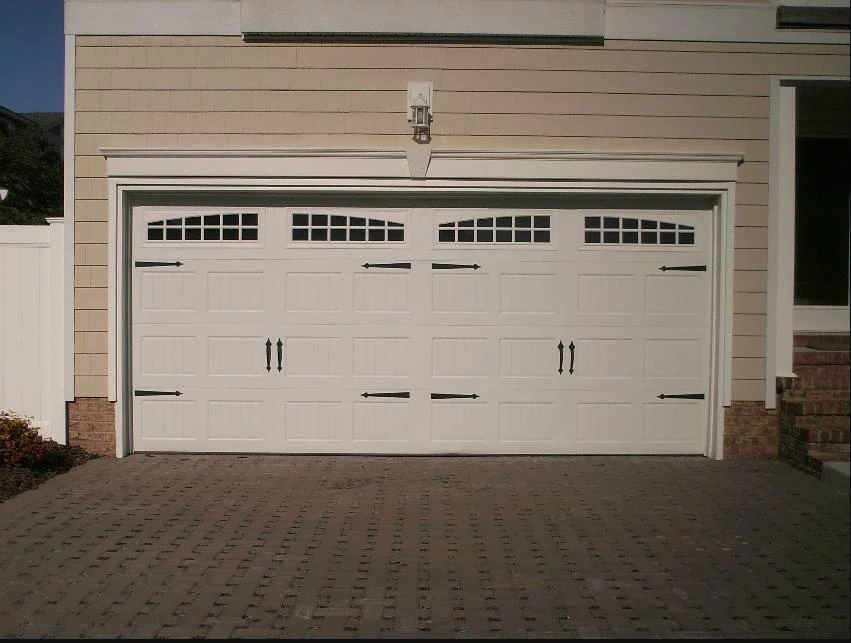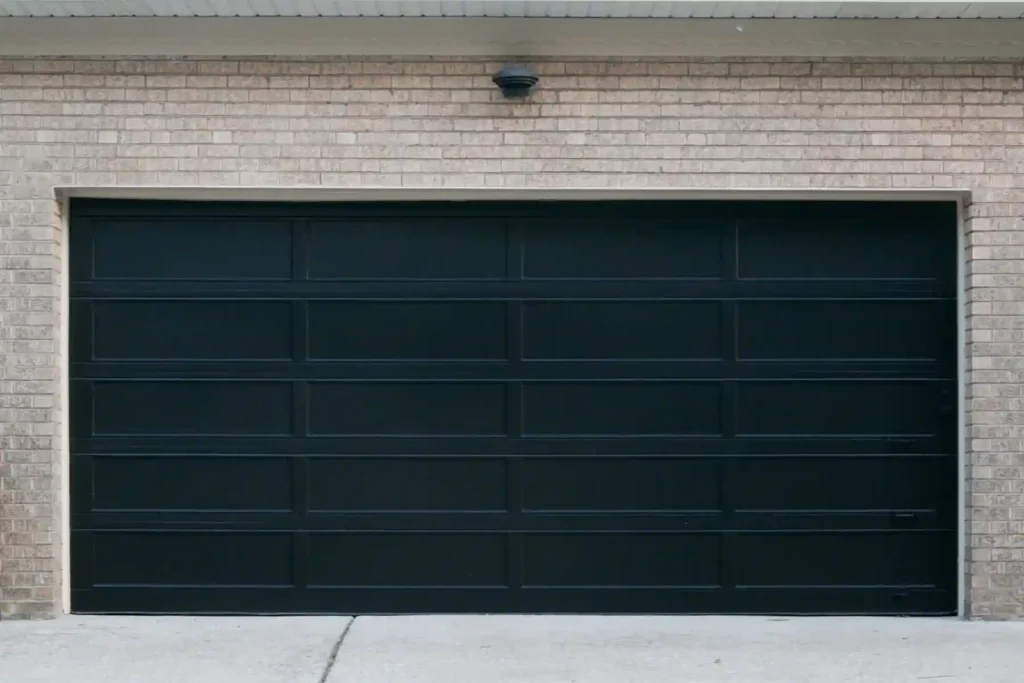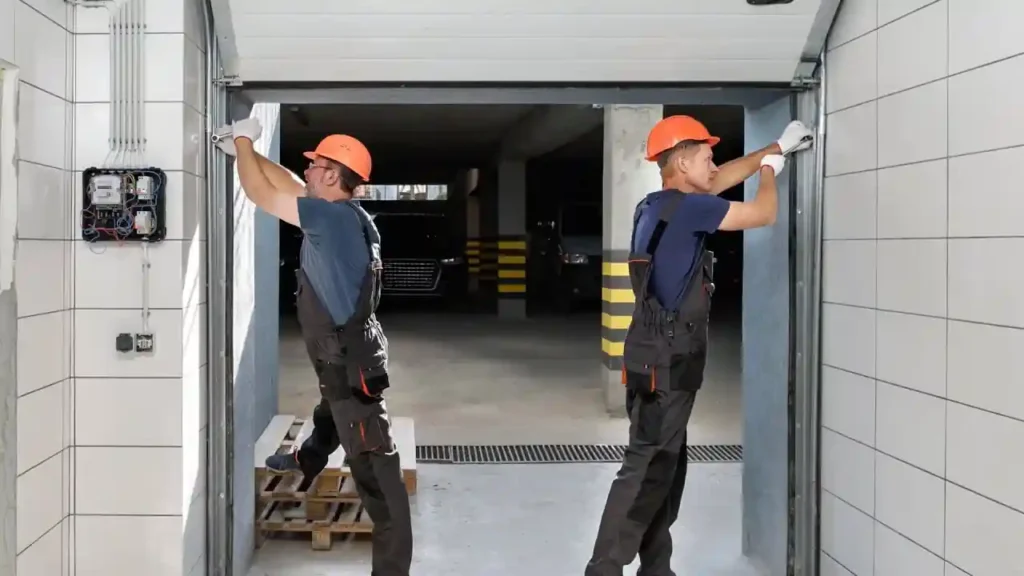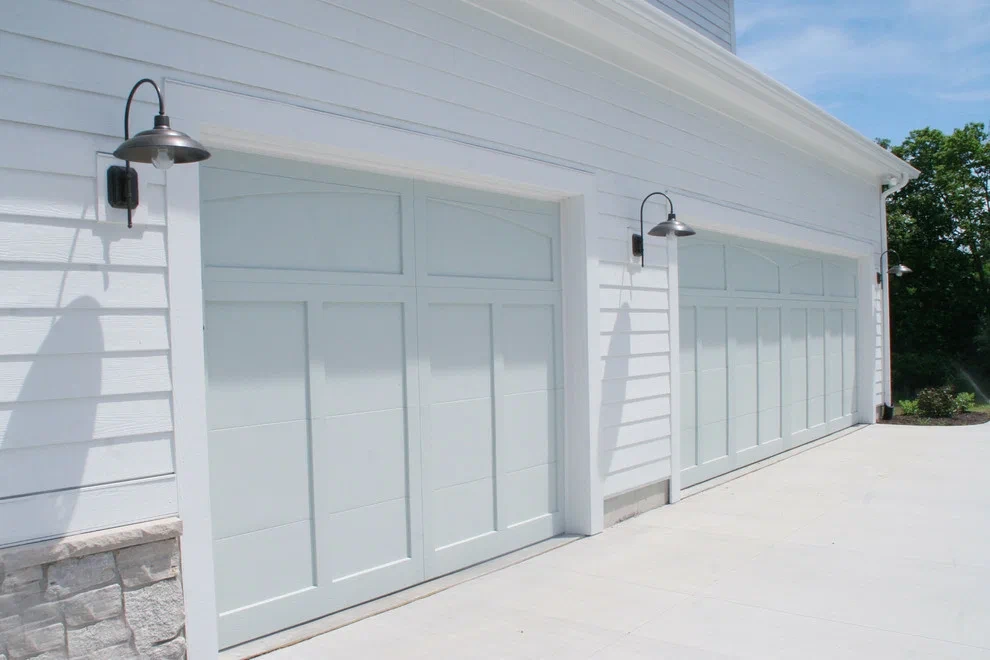A garage door stile is a crucial component of the door’s design and structure. Understanding the function and importance of the stile can greatly enhance your home improvement projects and ensure your garage door operates effectively. These vertical frames support the door panels, providing stability and security.
When considering a garage door roller replacement or upgrade, paying attention to the stiles can make a noticeable difference. They are not just functional; they contribute to the overall aesthetic of your home. Selecting the right materials and styles for your garage door can elevate your property’s curb appeal while ensuring durability.
Investing in knowledge about garage door stiles equips you to make informed decisions that enhance both the beauty and functionality of your home. Choosing the right type and material for these structural elements is essential for lasting performance and design satisfaction.
Design and Aesthetics of Garage Door Stile

The design and aesthetics of your garage door play a crucial role in enhancing your home’s curb appeal. Considerations like architectural design, material choices, and customization options can significantly influence the look and feel of your property.
1. Architectural Design Considerations
When selecting a garage door, it should complement the architectural style of your home. Whether your residence is modern, traditional, or industrial, the garage door should reflect that style.
For example:
- Modern Homes: Opt for sleek, contemporary lines with minimalist designs.
- Traditional Homes: Choose classic carriage-style doors with ornate detailing.
- Industrial Styles: Look for doors made of metal or reclaimed wood for an authentic feel.
Proper scaling is essential. The door size should balance with the rest of your home, ensuring a cohesive appearance.
2. Material and Finish Selection

The choice of material affects both aesthetics and functionality. Common materials include:
- Steel: Durable and can be finished in various colors.
- Wood: Offers natural beauty and charm. Requires maintenance.
- Fiberglass: Versatile and resistant to fading and denting.
Finish options can enhance the door’s appeal. Consider these:
- Paint: Allows for a wide range of color choices, from neutrals to bold hues.
- Stain: Works well for wood, enhancing its natural grain.
- Textures: Smooth vs. textured finishes can impact overall visual appeal.
Selecting the right combination ensures your garage door fits seamlessly into your home’s facade.
3. Customization Options
Customization is key to achieving the perfect garage door for your needs. Many manufacturers offer a variety of options that allow you to personalize your door.
You can consider:
- Colors: Choose from a palette that matches your home’s exterior.
- Windows: Add decorative or functional windows for natural light.
- Panels: Select from various styles, such as raised or recessed panels.
Every customization can elevate your door’s aesthetic appeal while also providing uniqueness. Make sure to explore these options to create a door that stands out yet harmonizes with the overall design of your home.
Core Components and Structure

Understanding the core components and structure of a garage door is essential for ensuring its functionality and durability. Key elements include the stiles, rails, and overall frame integrity, which all contribute to the door’s performance and load-bearing capacity.
4. Understanding Stiles and Rails
Stiles are the vertical components of the garage door. They run along each side, providing the primary structural framework. The vertical stiles support the weight of the door and any additional hardware attached, while the horizontal rails connect the stiles at the top and bottom, reinforcing the overall structure.
Each stile typically features a hollow design or a solid core, enhancing strength without adding excessive weight. This is crucial for maintaining a balance between load-bearing capacity and ease of operation. A well-constructed stile helps prevent warping and ensures the longevity of your garage door.
5. Frame and Hardware Essentials
The frame encapsulates the entire door structure, including stiles and rails. It acts as the backbone, providing stability during operation. Quality framing materials contribute to structural integrity, which is vital for safety and functionality.
In addition to stiles and rails, hardware elements such as hinges, rollers, and tracks are critical for smooth operation. Each piece should be of durable material to withstand the wear and tear of frequent use. Additionally, proper installation of these components helps maximize the door’s performance and longevity.
6. Panel Alignment and Integrity
Panel alignment ensures that each section of the garage door operates smoothly and maintains aesthetic appeal. Misaligned panels can lead to increased wear on the hardware and impede the door’s function.
Maintaining proper panel joints is also crucial. These joints should be reinforced to withstand pressure and prevent separation. Using high-quality adhesive or mechanical fasteners can enhance durability. Regular inspection and maintenance of panel integrity are essential for optimal performance. Keeping your panels aligned and secure also supports the overall structural integrity of your garage door system.
Installation and Construction

Installing a garage door requires precision and knowledge of various building materials and techniques. Understanding the components involved, as well as local building codes, is crucial for a successful installation.
7. Step-by-Step Installation Process
- Gather Tools and Materials: Have necessary tools at hand, such as a level, drill, screwdriver, and safety gear. Ensure you have the correct garage door kit which includes panels, tracks, and springs.
- Prepare the Opening: Measure the garage door opening to ensure it meets standard dimensions. Clean the area to remove any obstructions and ensure a flat surface.
- Install the Tracks: Attach the vertical tracks first on both sides of the opening using brackets. Ensure they are level and securely fastened.
- Assemble the Door Panels: Start from the bottom, join the panels using hinges. Lift each panel into position, connect them to the tracks, and check for alignment.
- Add Springs and Mechanical Systems: Follow the manufacturer’s instructions to install springs gradually. This is crucial for the proper functioning of the door.
- Final Adjustments: Check the door’s movement by opening and closing it. Make adjustments to ensure smooth operation.
8. Building Material and Construction Techniques
Selecting the right materials is key to the durability and performance of your garage door.
- Materials to Consider:
- Steel: Offers strength and security. Available in various gauges.
- Wood: Provides aesthetic appeal but requires more maintenance.
- Vinyl: Resists fading and denting, ideal for low-maintenance needs.
- Construction Techniques:
- Sandwich Construction: Involves layers of insulating material for energy efficiency. Commonly used for steel doors.
- Stiles and Rails: In wooden doors, these provide structural integrity. Properly joining these components enhances stability.
- Building Codes: Always ensure compliance with local building codes. These may dictate specific construction methods and materials to ensure safety and effectiveness in garage door installation.
Insulation and Energy Efficiency

Effective insulation in garage doors plays a crucial role in enhancing energy efficiency and maintaining a comfortable temperature. It also contributes to durability and weatherproofing, ensuring that your garage is protected from external elements.
9. Types of Insulation
Garage door insulation is available in several types, each offering different benefits. The most common types include:
- Polystyrene Foam: This rigid insulation is lightweight and has good thermal resistance. It is often used in sectional garage doors.
- Polyurethane Foam: Known for having a higher R-value, polyurethane provides superior thermal efficiency compared to polystyrene. It is typically found in insulated steel doors.
- Reflective Insulation: This type uses reflective material to reduce heat gain, suitable for regions with extreme heat. It may include a combination of reflective surfaces and air gaps.
The R-value of a garage door is a key indicator of its insulation effectiveness. Higher R-values mean better thermal resistance, which contributes significantly to energy savings over time.
10. Maximizing Thermal Efficiency
To maximize thermal efficiency, consider these strategies for your garage door:
- Seal Gaps and Cracks: Ensure that all edges of the garage door are properly sealed to prevent air leaks. Weatherstripping can help maintain insulation integrity.
- Choose Insulated Models: Opt for garage doors that come with built-in insulation. Look for options with higher R-values for better performance.
- Upgrade Existing Doors: If replacing the entire door isn’t feasible, insulating kits can also add value to existing doors. These kits usually consist of foam boards or reflective materials.
By implementing these strategies, you can enhance your garage door’s energy efficiency, resulting in lower heating and cooling costs throughout the year.
Safety and Security Features
When considering garage door styles, safety and security features play a crucial role. These elements help protect your property and ensure the well-being of those around you.
10. Preventing Unauthorized Access
One of the primary concerns with garage doors is preventing unauthorized access. Implementing high-quality garage door locks is essential. Opt for locks that are resistant to picking and forced entry.
Using safety sensors is another effective measure. These devices detect obstacles in the garage door’s path, preventing accidental closures. Ensure that your door has a manual release feature, allowing you to open it in emergencies.
Regular maintenance of your garage door system enhances safety as well. Checking for wear on springs and cables can prevent malfunctions that may lead to security breaches.
11. Advanced Security Technologies
Modern garage doors incorporate advanced security technologies. Look for features like smart garage door opener that offer compatibility with mobile apps. This allows you to monitor and control access from anywhere.
Some models include video surveillance systems that let you see who approaches your garage. Integration with home security systems can provide additional alerts for any suspicious activity.
Considering safety standards is vital during installation. Ensure your garage door meets local guidelines to maximize both safety and security. This attention to detail reduces risks associated with unauthorized entry or accidental injuries.
Maintenance and Troubleshooting

Regular maintenance and prompt troubleshooting are essential for ensuring your garage door operates efficiently. Addressing issues before they escalate can save time and costs associated with repairs.
12. Routine Care Procedures
To keep your garage door in optimal condition, perform routine maintenance every few months.
- Lubrication: Apply a silicone-based lubricant to rollers, hinges, and tracks. Avoid greases as they attract dirt.
- Cleaning: Wipe down the door’s surface with a mild detergent. Inspect for rust or paint chips.
- Alignment: Check the alignment of tracks by ensuring they are parallel and securely fastened. Misalignment can lead to operational issues.
- Balance Check: Disconnect the opener and manually lift the door halfway. It should remain in place. If it drops, adjusting the tension might be necessary.
Follow manufacturer specifications for any specific maintenance recommendations.
13. Identifying Common Issues
Knowledge of common garage door problems enables you to troubleshoot effectively.
- Strange Noises: Grinding or squeaking sounds often indicate a need for lubrication. Rattling can signal loose hardware.
- Door Doesn’t Open/Close Properly: This may be due to misalignment, or a faulty opener. Inspect sensors for obstructions.
- Unresponsive Remote: Ensure the remote has fresh batteries. If issues persist, check the opener’s wiring and settings.
- Slow Operation: Dirt buildup and worn parts can slow the mechanism. Regular cleaning and part checks help prevent this.
Addressing issues early can enhance the lifespan of your garage door.
Mechanics and Operation
Understanding the mechanics involved in garage doors is essential for effective use and maintenance. This includes a look at door mechanisms, how they operate, and the distinction between automated and manual systems.
13. Understanding Door Mechanisms
Garage doors rely on a combination of physical components for operation. The garage door mechanism typically includes garage door springs, like the torsion spring system or extension spring system. These springs counterbalance the door’s weight, allowing it to open and close smoothly.
The door moves along tracks, which keep it aligned. Proper track alignment ensures that the door operates without obstruction. Garage door rollers are attached to the door and slide along these tracks, reducing friction during movement. Hinge types connect the door sections and facilitate smooth motion, while roller bearings help minimize wear and tear.
14. Automated Systems and Manual Operations
Automated garage door systems typically use a garage door opener which activates the door remotely. This opener interacts with the springs and tracks, enabling ease of use. Remote controls or wall-mounted buttons communicate with the motor to raise or lower the door.
In contrast, manual operations require you to use the handle or pull strap to open the door. This method relies heavily on the efficiency of the springs and hinges. Regular maintenance, such as lubricating hinges and checking roller bearings, is important to ensure smooth manual operation. Understanding both methods allows for better decision-making when choosing a garage door system.
Conclusion
Garage door stiles are essential for both the functionality and appearance of your garage door. They provide structural support, enhance security, and contribute to the overall design of your home. Choosing the right materials, styles, and finishes can significantly impact durability and curb appeal.
Proper installation, insulation, and maintenance are key to ensuring long-term performance. By understanding the role of stiles, rails, and other core components, you can make informed decisions when upgrading or replacing your garage door. Prioritizing safety features and energy efficiency will further enhance its value.
Frequently Asked Questions
1. What is a stile on a garage door?
A stile is a vertical frame component of a garage door, providing structure and support. It connects the panels and reinforces the door’s integrity. Stiles are essential for durability and stability.
2. What is a stile in a door?
A stile is the vertical section of a door’s frame, typically found on both sides. It helps maintain the door’s shape and supports the hinges. Stiles are crucial for strength and balance.
3. What are garage-style doors called?
Garage-style doors are commonly called sectional doors, roll-up doors, or carriage-style doors. These names vary based on design and functionality. They offer different aesthetics and space-saving benefits.
4. What is a stile line on a door?
A stile line refers to the vertical alignment where the stiles meet the panels. It ensures a uniform look and structural integrity. Stile lines contribute to the door’s design and function.
5. What is the purpose of stiles in a door?
Stiles provide structural support and help the door maintain its shape. They also hold hinges and locks in place. Without stiles, doors would lack stability.
6. Are garage door stiles made of wood or metal?
Garage door stiles can be made of wood, metal, or composite materials. The choice depends on durability, aesthetics, and insulation needs. Metal stiles are common in modern designs.
7. What is the difference between a stile and a rail on a door?
A stile is the vertical part of a door’s frame, while a rail is the horizontal part. Both work together to form the door’s structure. Rails provide width, while stiles give height.
8. Do all doors have stiles?
Most doors have stiles, but some modern designs, like frameless glass doors, do not. Stiles are crucial for traditional wood and panel doors. They add strength and support.

